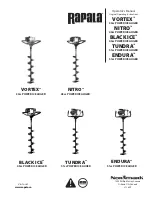
92
HSB Series LCD Display
5.4 Working with Routes
A route
is made up of a series of waypoints (maximum 50). To make a route you
place a series of waypoints on the chart.
When a route is created it becomes the current route and is displayed on-screen.
The current route is maintained when you power-off. Only one route can be
current and is displayed (if it is in the field-of-view) as solid lines connecting
waypoints. If you are following the route, the current leg is shown as a dotted
line and previous legs are removed from the screen (although the waypoints
remain displayed). The current route (and its waypoints) is transferred via
SeaTalk to a repeater chart display and other instruments. You can also use the
Waypoint Transfer functions to transfer the route database to a repeater display.
Once you have created a route you can use the
GOTO
soft keys to follow the
route. In addition, the
GOTO
default soft key provides various options as
described in
Section 5.5
.
Up to 20 routes can be saved in the route database. You can then select a route
from the database list as the current route.
The current route can be edited by adding and moving waypoints. The current
route is always placed in the database list as route number 0, so you can edit the
current route without affecting the original route in the database. Once a route
has been saved, options are also provided to name a route, erase a route and to
display route details.
You can use the route information to review your passage plan by adjusting the
planned Speed Over Ground (SOG).
Notes
:
1.
The route database is stored locally, in the display unit on which it was
created. Although the current route is automatically transferred, you need to
use the
WAYPOINT TRANSFER
function, described in Section 5.6, to transfer the
complete route database to a repeater display connected via HSB.
2.
It is possible for the current route to be overwritten by a route from another
unit on an integrated system, so it is advisable to save all routes.
This section explains how to perform the following tasks:
• Creating a new route.
• Saving the current route in the database list.
• Clearing the current route.
• Retrieving a route from the database list as the current route.
• Displaying route information, including the route leg data and waypoint
details. Use the waypoint details to review your passage plans for different
speeds.
Working with
Routes
Summary of Contents for RL70C
Page 2: ...HSB Series LCD Display Owner s Handbook Document number 81163_1 Date 1st September 1999...
Page 64: ...50 HSBSeriesLCDDisplay...
Page 154: ...140 HSBSeriesLCDDisplay...
Page 184: ...170 HSBSeriesLCDDisplay...
Page 190: ...176 HSBSeriesLCDDisplay...
Page 200: ...186 HSBSeriesLCDDisplay...
















































